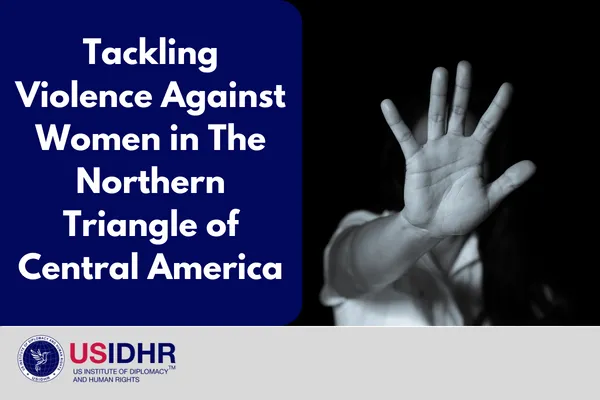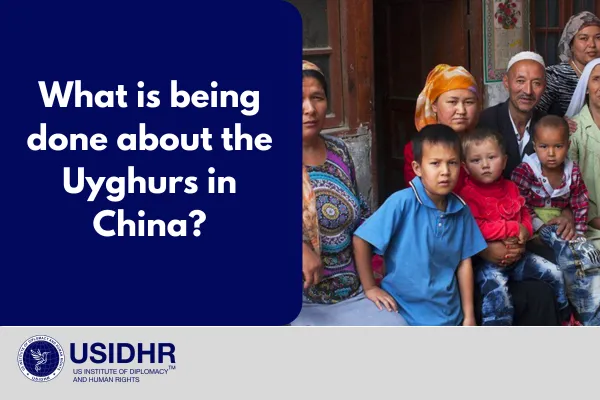
Introduction:
In a modern-day colonial project, the Chinese government is committing genocide and crimes against humanity against the Uyghur population. Using the Global War on Terror as an excuse, the Chinese Communist Party (CCP) employs Islamophobia to dehumanize the Uyghur population and strip them of their human rights. While the motivations of the Chinese government in Xinjiang are varied, all policies have resulted in a brutal crackdown. Ban Ki-moon, Secretary-General of the United Nations, said that “[g]enocide is not a single event but a process that evolves over time, and requires planning and resources to carry out” and that is exactly what the CCP has done[8]. Under the UN Convention on the Prevention and Punishment of the Crime of Genocide, the components of genocide are broken into five parts[7]. Evidence directly implicating several high-level CCP members shows the necessary intent to destroy, in whole or in part, the Uyghur population[8]. The following article will detail how the atrocities taking place in Xinjiang have violated this Convention as well as religious freedom rights. Despite first-hand and photographic evidence of human rights violations, there has been a lack of meaningful international action. The international community cannot continue to allow these atrocities to take place. To address the Uyghur genocide in Xinjiang, there needs to be an aggressive response from the international community.
Who are the Uyghurs?:
In northwest China, there is a population of about 12 million Uyghurs, mostly Muslim, living in Xinjiang[17]. This region is officially recognized by the CCP as the Xinjiang Uyghur Autonomous Region (XUAR), but it is also referred to as East Turkestan and Uyghuristan[15][8]. Xinjiang is the largest region of China taking about one-sixth of its landmass, and bordering eight countries[15]. Geographic proximity to Central Asia and Europe is not overlooked in terms of trade. Similar to Tibet, Xinjiang is autonomous, but in practice, both regions are treated as subservient to the Chinese government. Although Xinjiang is mostly desert, it is rich in several significant resources: cotton, coal, oil, and natural gas[17]. Due to its abundance of resources, Xinjiang has been indispensable to China’s economic growth.
Historically the Uyghurs are Turkic people who speak a language closest to Uzbek that migrated to the region in the sixth century C.E. The group’s dominant religion is Islam. It wasn’t until 1884 that the region was colonized, became an official Chinese province, and was renamed Xinjiang[2][4]. After the Qing Dynasty collapsed in 1911, the Uyghur population of Xinjiang declared independence for the region. The first East Turkestan Republic was declared in 1933 but was quickly repressed in 1934[8]. The second Turkestan Republic was established in 1944, however, the Chinese Communist Party reclaimed the province in 1949[17][4][8].
Crackdown on Xinjiang:
Since China reclaimed Xinjiang in 1949, the Chinese government has pushed for the colonization of the region by the Han. When this policy, the Great Western Development campaign, first began, the Han, the country’s ethnic majority, only made up 6.7 percent of Xinjiang’s population[8][4]. Within 30 years this ratio jumped to 41.6 percent[4]. This policy intended to reduce Uyghurs from a majority to a plurality. From 1949 to 2010, the Uyghur percentage of the population decreased from 82% to 46%[8]. In response to colonization and religious oppression, Uyghurs began migrating out of Xinjiang in the 1960s.
The 1990s were a turning point in the crackdown on Xinjiang. When the collapse of the Soviet Union led to the formation of several independent Central Asian states, there were also calls for Uyghur independence. These calls went unanswered. At this time, the Chinese government also started to categorize Muslim activists as terrorists. Although there is little evidence of extremism in the region, the rise of the Taliban and Al-Qaeda in Afghanistan was a point of concern for the CCP[4]. Clashes between the Chinese government and Uyghurs are believed to have peaked in 2009 with riots in Urumqi, the capital of Xinjiang. During the riots, nearly 200 people died, however, the death of many Uyghurs went uncounted[8].
Since the 2009 riots, several policies have been acted to quell dissent and further regulate the Uyghur population. Namely, the “Strike Hard Campaign Against Terrorism, Separatism, and Religious Extremism” of 2014 and the “Xinjiang Uyghur Autonomous Region Regulations on De-radicalization” of 2017. Both policies sanction Islamic practices and isolate Uyghurs from the outside world. For instance, adding quitting smoking, foreign ties, and the refusal to listen to public radio or TV to the list of signs of extremism[8].
A crucial aspect of China’s repressive policies is its Orwellian surveillance system[2][12]. Advanced surveillance was enacted for security purposes before the 2008 Olympics in Beijing. However, a massive platform was created and used to target the “other”. Under the “Xinjiang Uyghur Autonomous Region Regulations on De-radicalization” policy, surveillance practices ramped up[2]. This surveillance system included a grid system of Xinjiang that divided the population into segments of 500 people. Within each square, police regularly scan identification cards, take photographs and fingerprints, and search cell phones. There are also facial recognition cameras every hundred yards. All of this information and biometric data are then collected into an AI-powered database called Integrated Joint Operations Platform[15]. Documents from 2017, that weren’t published until 2019, showed that with this database 15,683 “suspicious persons” were rounded up in a one-week period in June 2017[4]. In 2017, 21% of arrests in China took place in this region, despite only 1.5% of the population living there[12].
Along with colonization practices, the CCP has separated families and encouraged intermarriage to diminish the Uyghur population in Xinjiang[4]. In October 2018, Uyghurs began to be fined for having more children than their Han counterparts, and the excess Uyghur children would be relocated into state-sponsored orphanages. Under the “Five Guarantees," policy children of internees would be provided state-sponsored care until the age of 18[8]. Thus, starting the re-education process at a young age stymies the generational spread of the Uyghur identity. Within the internment camps, there have been significant reports of forced sterilization and forced intrauterine devices (IUD), causing the birth rate in Xinjiang to halve between 2017 and 2019. This is the largest drop in birth rates in UN history[2]. In 2018, 80% of the IUD insertions in China took place in this region[4].
This systematic destruction of the Uyghur people and their religious-ethnic identity violates several aspects of the UN Convention on the Prevention and Punishment of the Crime of Genocide. Article II clearly states, “In the present Convention, genocide means any of the following acts committed with intent to destroy, in whole or in part, a national, ethnical, racial or religious group, as such: (a) Killing members of the group; (b) Causing serious bodily or mental harm to members of the group; (c) Deliberately inflicting on the group conditions of life calculated to bring about its physical destruction in whole or in part; (d) Imposing measures intended to prevent births within the group; (e) Forcibly transferring children of the group to another group”[7]. By forcing the Uyghurs to adopt Chinese culture and speak Mandarin, the Chinese government is also violating the UN Declaration on the Rights of Indigenous Peoples[8]. The policies pursued by Beijing toward the Uyghurs to colonize Xinjiang are a clear instance of genocidal acts and human rights violations.
Islamophobia and Sinicization:
Since the election of President Xi Jinping in 2012, the CCP has adhered to the goal to “sinicize religions” in China[10][15]. “Sinicizing religions” means to “shape all religions to conform to the officially atheist party’s doctrines and the majority Han-Chinese society’s customs”[15]. Buddhism is typically used as an example of “sinicization”, as it has been gradually integrated into Chinese culture, and is accepted as a Chinese religion[10]. The CCP’s policy on religious affairs was elaborated in 2016 when Zhang Yijiong from the United Front Work Department (UFWD) -- the agency within the CCP that oversees China’s religious affairs-- stated that China will be cracking down on acts such as “taking advantage of religion to harm national security, promoting extremism for terrorist activities, and endangering national unity”[10]. The keys to this policy are teaching Chinese youth to have a science-based worldview, and for adults to affirm Marxist atheist values. Officially five religions are recognized by the government Buddhism, Catholicism, Daoism, Islam, and Protestantism. Yet, under sinicization efforts, these religions have to receive official sanctions to operate and practices are dictated by the state[8].
However, with the rise of Islamic extremism in the 1990s, the Chinese government has conflated Islam with terrorism. Even going so far as to describe Islam as an “ideological illness”[2]. Specifically using the Global War on Terrorism, as a narrative to disguise genocidal acts as counterterrorism[15]. Which on the international level can set a dangerous precedent. “Framing crimes against humanity as counterterrorism has the potential to set a dangerous precedent, creating a world where repressive governments can target marginalized groups with even greater impunity and frame expression of religion or identity as a dangerous threat”[12, 9]. Islamophobia plays a key role in the colonization of Xinjiang. By dehumanizing the population, the CCP rationalizes its actions.
To effectively engage in Islamic prejudice, the government has categorized countless practices as extremism. Beards, headscarves, and fasting during the month of Ramadan are prohibited. Studying Islam and Islamic prayers are forbidden. Along with prohibitions, only state-sponsored radio and TV broadcasts are allowed, to re-educate youth to align with traditional Chinese culture. There is even a list of banned names including Hajj, Iman, Mecca, Medina, and Muhammad[8]. “According to Radio Free Asia, from February 6, 2019, Xinjiang authorities are ‘...forcing some Muslims to drink alcohol, eat pork, and display emblems of traditional Chinese culture’”[8]. Holy spaces have also been destroyed to stifle religious practices. As of 2021, 8,500 mosques (65% of all mosques in China) had been destroyed[12].
The practice of sinicization and the government-led crackdown on religious freedom are direct violations of the human right to the freedom of religion or belief. This right is guaranteed by article 18 of the UN Universal Declaration of Human Rights, article 18 of the International Covenant on Civil and Political Rights, and the Declaration on the Elimination of All Forms of Intolerance and of Discrimination Based on Religion or Belief[11]. Within the right to freedom of religion, there are many dimensions including, freedom from coercion, freedom to worship, teaching and disseminating materials, and places of worship.
Forced Labor in Xinjiang:
Within Xinjiang, there are hundreds of internment camps used to “re-educate” the Uyghur population. In total, there are believed to be 1 to 2 million people held in these mass-internment camps[16][15][4]. The largest mass internment of an ethnic-religious minority since World War II[16]. Reports and photographic evidence from the internment camps depict prison-like conditions rife with torture, sexual abuse, and mass rape[8][12]. In these camps, Uyghurs are forced to renounce Islam, study Marxism, and work in abhorrent conditions[15][12]. Despite claims that all “trainees” in these camps had “graduated” in 2019, camps continue to grow[12, 7]. Between April 2017 and August 2018, they tripled in size, and spending on camps increased by 20 billion yuan ($2.96 billion) in 2017[15].
The focal point of the internment camps are the state-run forced labor factories. These factories mass-produce and manufacture the natural resources located in Xinjiang. Most prominently, government subsidies have been given to the textile industry and the solar industry to operate in the region. Subsidies were also given to support a forced transfer program, which is designed to lower the Uyghur population in Xinjiang and place them in controlled environments where they can continue to be indoctrinated. The transfer program works on a point system under the “People’s Convenience Card” that scores Uyghurs on their “political reliability”. As individuals show signs of extremism (being unemployed, possessing a passport, possessing religious knowledge) their level of “trustworthiness” goes down, and they are at risk of forced transfer[12, 5]. Since 2017, over 8,000 Uyghurs have been forced to transfer to 83 global brand factories in China[15]. Some of those brands are Adidas, Amazon, Apple, Google, Microsoft, Calvin Klein, and BMW[4].
Global Propaganda:
China continues to claim that international intervention concerning their actions towards the Uyghurs would be a violation of their sovereignty. However, China’s repressive actions are not contained to its borders. The Chinese government is actively hunting down Uyghurs abroad. In a report built by Jardine, Uyghur Human Rights Project and Oxus Society of Central Asian Affairs, more than 5,500 Uyghurs have reportedly been targeted since 1997. This includes cyber threats, threats to family within China, and detention by foreign governments supporting China. Of that number, 1,500 have been forced to return to China and 1,300 of them since 2014. Transnational repression has taken place in more than 40 countries. The Belt and Road Initiative has been critical to pressuring Muslim majority countries such as Saudi Arabia, Egypt, and the UAE to support or knowingly ignore Chinese repression abroad. In 2020, 45 countries openly stated their support for mass detention in Xinjiang[16]. Which is greatly concerning in terms of garnering international support to condemn China.
What do Chinese officials say about the camps?:
Since the abuses toward the Uyghur population became public knowledge in 2016/2017, China has ultimately denied all claims. Making no concessions to acknowledge the genocidal acts committed against this group. In October 2018, XUAR Chairman Shohrat Zakir referred to the camps as voluntary, harmless “professional vocational training institutions”[12, 7]. In a statement a year later, all “trainees” were said to have “graduated” from the camps. That the camps would be downsized. The CCP has repeatedly noted that claims of forced labor are baseless and that the government is working to improve living conditions in the region by finding Uyghurs jobs[6]. However, evidence indicates otherwise[12][15][16].
The foundation of China’s global propaganda is controlling the narrative to its advantage. In denying all claims of genocidal acts, several testimonials and videos have been orchestrated to prove innocence. Videos are published by the CCP to reassure the community that the camps are only reeducation camps and that no harm is taking place. However, there is far too much consistency and repetition in these videos for them to be considered authentic[2].
How has the international community responded?:
Western countries have been quick to condemn China’s abuses in Xinjiang. In 2020, the United States Congress passed the U.S. Uyghur Human Right Policy Act. This act “requires tracking and reporting human rights violations against Uyghurs, ethnic Kazakh, Kyrgyz, and other Muslim minority groups in Xinjiang”[16]. Along with tracking the human rights violations, the US Department of Treasury sanctioned several senior officials in China who are believed to be responsible for the crimes against Uyghurs[16]. In 2021, the European Union (EU), United Kingdom, and Canada followed suit announcing targeted sanctions on regional officials. Accompanying sanctions, seven national governments pass resolutions condemning the atrocities and recognizing the Chinese government’s actions as genocide[12][1].
In 2021 U.S. President Biden signed into law the Uyghur Forced Labor Prevention Act, which went into effect on June 22, 2022[3][6][1]. This law requires US importers to “prove that no element of their product was produced through forced labor, aims to insulate US companies and consumers from complicity in forced labor practice in Xinjiang”[14]. Specifically targeting cotton, tomato, and polysilicon (a key component in solar panel manufacturing, of which 42% of the world’s supply is manufactured in Xinjiang) imports[14]. As mentioned, the textile and solar industries will be hard hit by this law. As 11 Chinese solar companies publicly stated their participation in the labor transfer program, 4 more locations have accepted transferred Uyghurs, and 90 companies have affected supply chains. Along this same vein, Norway has divested from Hikvision, a supplier of surveillance cameras to the internment camps[12]. As more evidence comes out, more efforts are made to ensure that countries and their consumers are not complicit in Uyghur forced labor.
The US, UK, Canada, India, Australia, Lithuania, Kosovo, Belgium, Denmark, and Estonia have also boycotted the 2022 Beijing Winter Olympic Games in light of the ongoing genocide. Although athletes from the respective countries still participated in the games, no government officials or ministers attended[1].
Even though there has been a concerted effort from individual countries and international NGOs to address the atrocities in Xinjiang, the UN and the International Criminal Court (ICC) have been inactive. In December 2020, the ICC stated that it could not investigate abuses against Uyghurs as China is not a member of the ICC and therefore the body does not have jurisdiction in China. The lack of meaningful UN action is correlated to China’s position as a Permanent-5 member. Giving the country the authority to veto and prevent actions on the matter[1]. To make up for this inadequacy a UK-based and civil society-led Uyghur Tribunal was created in 2021. After the tribunal considered extensive evidence from reports, victims, and witnesses, it judged that China has committed genocide and crimes against humanity[1][11].
Conclusion:
While countries around the world condemned China’s genocidal acts, there need to be multi-level solutions to address these human rights violations. Key actors in these solutions are the private sector, multinational corporations, national governments, and international organizations. Policy recommendations for the international community to address the Uyghur genocide and mitigate complicity in Uyghur forced labor include: giving Uyghurs Priority-2 refugee status to extend safe havens; expanding the Uyghur Forced Labor Prevention Act worldwide; sanctions on high-level CCP officials responsible for these atrocities; sanctions on companies that used Uyghur forced labor; and proactively helping Uyghurs in countries with a high risk of refoulement. The US specifically should redesignate China as a “country of particular concern” under the International Religious Freedom Act.
The US Institute of Diplomacy and Human Rights is dedicated to eliminating discrimination based on religious beliefs and in this sense, offers various seminars, workshops, and educational materials on protecting freedom of religion or belief, and promoting religious pluralism. USIDHR works hard to advocate for the passing of legislation that will promote religious freedom and combat discrimination based on religious beliefs. In addition to organizing several events to emphasize the importance of religious freedom, USIDHR offers courses in Human Rights Education Training. Students undertake an 8-module human rights certification program that teaches them the necessary skills and information to make a change in the world as human rights consultants. If you’re interested in becoming a human rights advocate, then click here to access the registration page.
Reference list:
[1] “2022 United States Commission on International Religious Freedom Annual Report.” United States Commission on International Religious Freedom, April 25, 2022. https://www.uscirf.gov/sites/default/files/2022-04/2022%20USCIRF%20Annual%20Report_1.pdf.
[2] Abbas, Rushan. “The Rise of Global Islamophobia and the Uyghur Genocide.” Brown Journal of World Affairs 28, no.1 (2021): 1–12. Accessed July 5, 2022. https://search.ebscohost.com/login.aspx?direct=true&AuthType=ip,shib&db=asn&AN=154962775&site=ehost-live&scope=site.
[3] Blinken, Antony J. “Implementation of the Uyghur Forced Labor Prevention Act – United States Department of State.” U.S. Department of State, June 21, 2022. https://www.state.gov/implementation-of-the-uyghur-forced-labor-prevention-act/.
[4] Boissoneault, Lorraine. “Is China Committing Genocide against the Uyghurs?” Smithsonian Institution, February 2, 2022. https://www.smithsonianmag.com/history/is-china-committing-genocide-against-the-uyghurs-180979490/.
[5] “China: Religious Repression of Uighur Muslims.” Human Rights Watch, October 28, 2020. https://www.hrw.org/news/2005/04/12/china-religious-repression-uighur-muslims.
[6] “China’s Xinjiang Uses Forced Labor in Materials, Report Says.” Bloomberg News, June 15, 2022. https://www.bloomberg.com/news/articles/2022-06-15/china-s-xinjiang-uses-forced-labor-in-materials-report-says.
[7] “Convention on the Prevention and Punishment of the … – United Nations.” United Nations. Accessed July 1, 2022. https://www.un.org/en/genocideprevention/documents/atrocity-crimes/Doc.1_Convention%20on%20the%20Prevention%20and%20Punishment%20of%20the%20Crime%20of%20Genocide.pdf.
[8] Enos, Olivia. “The Xinjiang Police Files Should Prompt Action against Uyghur Genocide.” Forbes Magazine, June 1, 2022. https://www.forbes.com/sites/oliviaenos/2022/05/31/the-xinjiang-police-files-should-prompt-action-against-uyghur-genocide/?sh=67b5e9ef2856.
[9] Fallon, Joseph E. “China’s Crime Against Uyghurs Is a Form of Genocide.” Fourth World Journal 18, no. 1 (Summer 2019): 76–97. https://search.ebscohost.com/login.aspx?direct=true&AuthType=ip,shib&db=asn&AN=137766246&site=ehost-live&scope=site.
[10] Gao, Charlotte. “Chinese Communist Party Vows to ‘Sinicize Religions’ in China.” The Diplomat, October 24, 2017. https://thediplomat.com/2017/10/chinese-communist-party-vows-to-sinicize-religions-in-china/.
[11] Gunter, Joel. “China Committed Genocide against Uyghurs, Independent Tribunal Rules.”
BBC News, December 9, 2021. https://www.bbc.com/news/world-asia-china-59595952.
[12] “International Standards.” OHCHR. Accessed July 8, 2022. https://www.ohchr.org/en/special-procedures/sr-religion-or-belief/international-standards#:~:text=Freedom%20of%20religion%20or%20belief%20is%20guaranteed%20by%20article%2018,Based%20on%20Religion%20or%20Belief.
[13] Kanat, Omer. “The Uyghur Genocide and International Policy Response.” The Brown Journal of World Affairs 28, no. I (2021): 1–15.
[14] Kine, Phelim. “U.S. Importers Brace for Chaos as Uyghur Act Looms.” POLITICO, June 16, 2022. https://www.politico.com/newsletters/politico-china-watcher/2022/06/16/u-s-importers
-brace-for-chaos-as-uyghur-act-looms-00040072.
[15] Maizland, Lindsay. “China’s Repression of Uyghurs in Xinjiang.” Council on Foreign Relations, March 1, 2021. https://www.cfr.org/backgrounder/chinas-repression-uyghurs-xinjiang.
[16] Schecter, Anna. “China Is Hunting down Uyghurs with Help from Some Surprising Countries.” NBCUniversal News Group, April 25, 2022. https://www.nbcnews.com/news/world/chinese-government-hunting-uyghurs-world-help-surprising-countries-rcna24987.
[17] “US Responses to China’s Crimes Against the Uyghurs.” United States Holocaust Memorial Museum. Accessed June 29, 2022. https://www.ushmm.org/genocide-prevention/countries/china/case-study/response/us-responses-to-chinas-crimes-against-the-uyghurs.
[18] “Who Are the Uyghurs and Why Is China Being Accused of Genocide?” BBC News, May 24, 2022. https://www.bbc.com/news/world-asia-china-22278037.
Join One of Our Certificate Trainings:
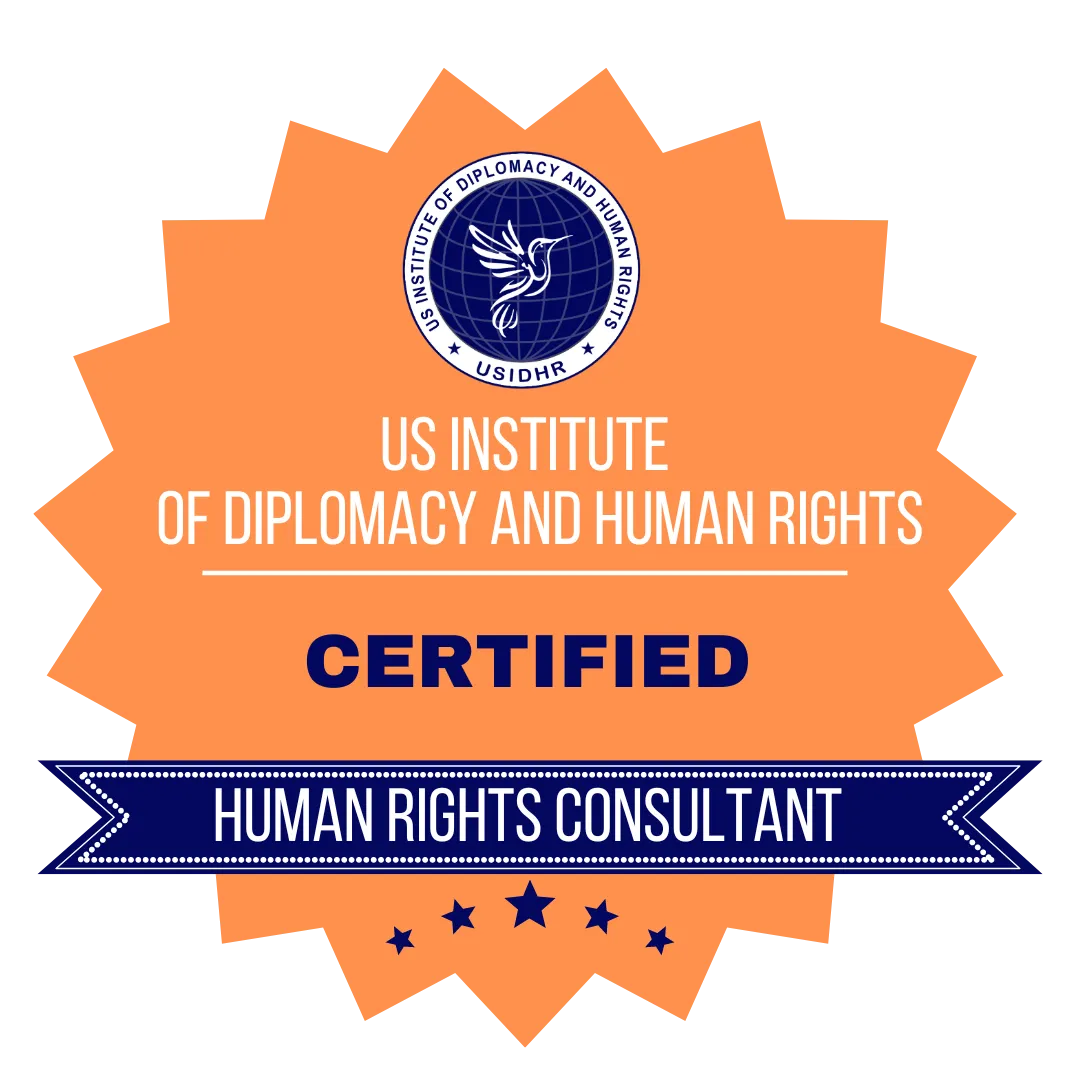
Human Rights Education Certification Training

Human Trafficking Certification
Training
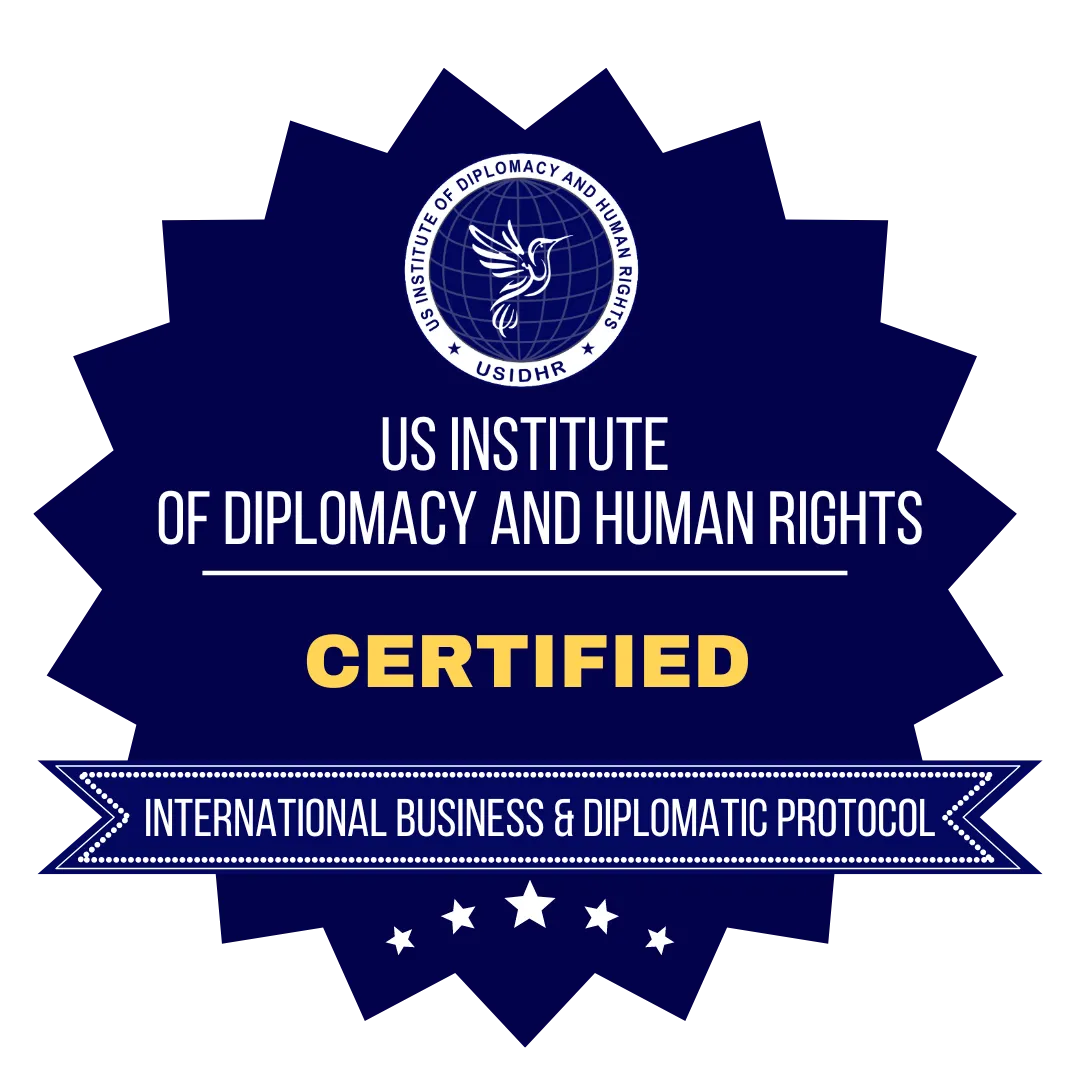
International Business and Diplomatic Protocol Certification

Capacitación En Derechos Humanos
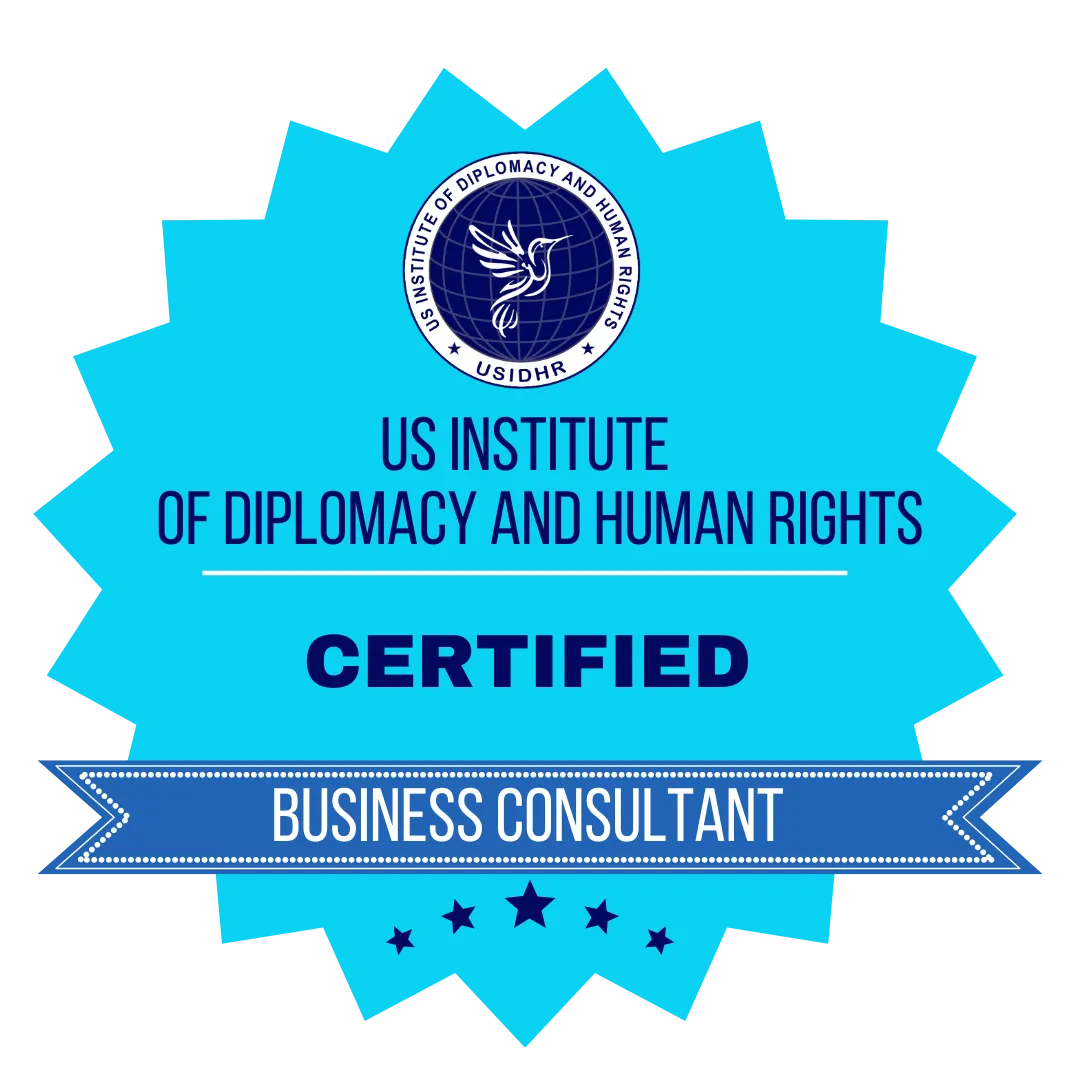
Business Consulting Certification Training
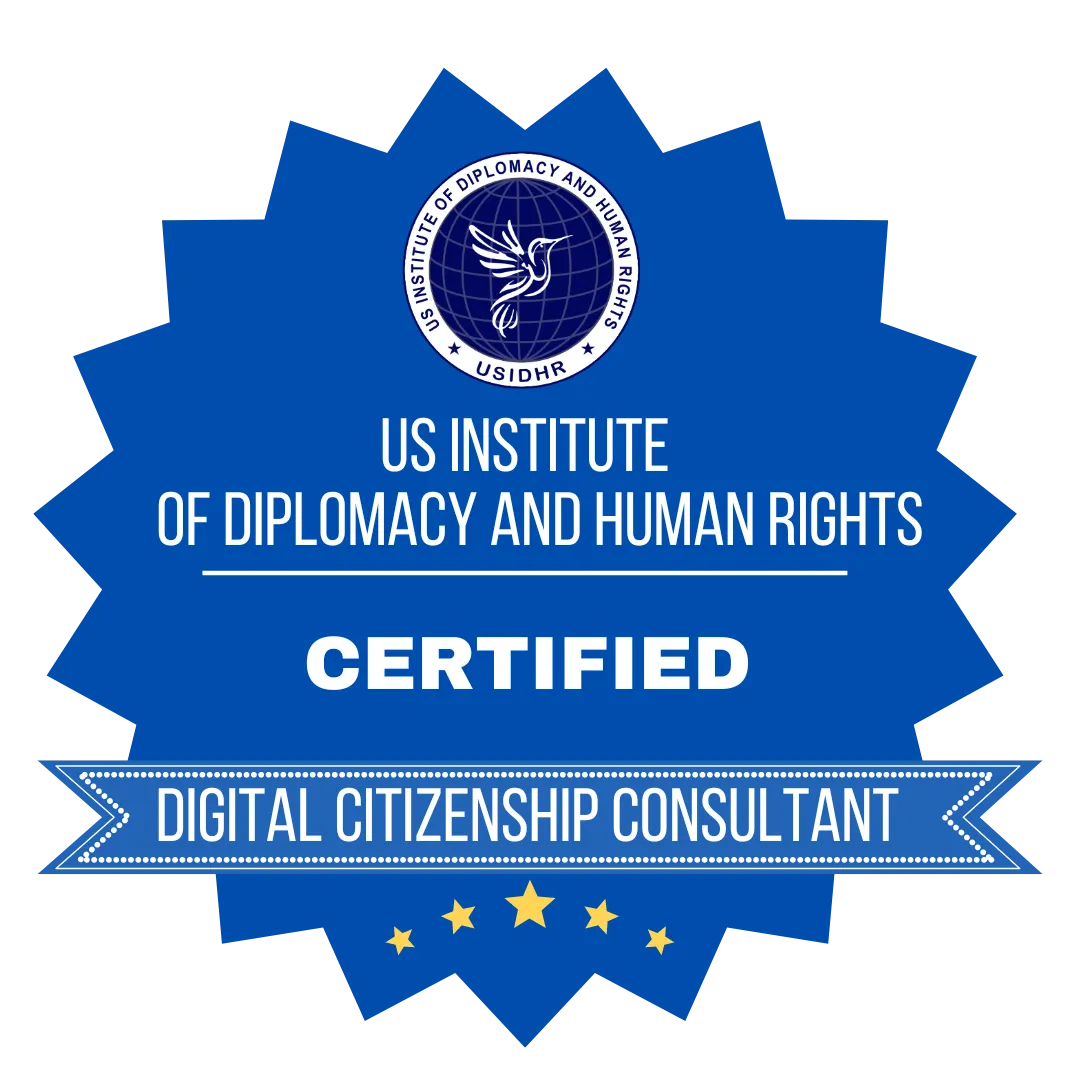
Digital Citizenship Certification
Training

The US Institute of Diplomacy and Human Rights (USIDHR) is an International Continuing Professional Development (CPD) Accredited Organization. Accredited CPD training means the learning activity has reached the required Continuing Professional Development standards and benchmarks. The learning value has been scrutinized to ensure integrity and quality. The CPD Certification Service provides recognized independent CPD accreditation compatible with global CPD requirements
US Institute Of Diplomacy And Human Rights
1250 Connecticut Ave NW Ste 700, Washington, DC 20036




